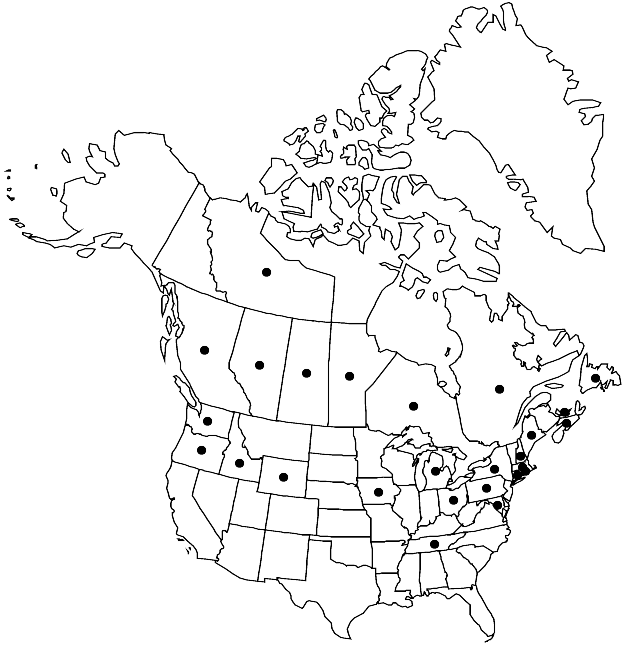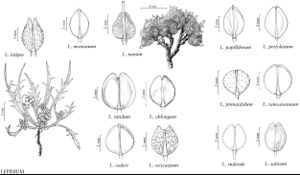Difference between revisions of "Lepidium sativum"
Sp. Pl. 2: 644. 1753.
FNA>Volume Importer |
imported>Volume Importer |
||
| (6 intermediate revisions by 2 users not shown) | |||
| Line 6: | Line 6: | ||
|place=2: 644. 1753 | |place=2: 644. 1753 | ||
|year=1753 | |year=1753 | ||
| + | }} | ||
| + | |special_status={{Treatment/ID/Special_status | ||
| + | |code=I | ||
| + | |label=Introduced | ||
| + | }}{{Treatment/ID/Special_status | ||
| + | |code=F | ||
| + | |label=Illustrated | ||
}} | }} | ||
|basionyms= | |basionyms= | ||
| Line 22: | Line 29: | ||
|habitat=Gardens, old fields, vacant lots, disturbed areas, railroad embankments, waste grounds, roadsides, cultivated areas | |habitat=Gardens, old fields, vacant lots, disturbed areas, railroad embankments, waste grounds, roadsides, cultivated areas | ||
|distribution=Alta.;B.C.;Man.;Nfld. and Labr. (Nfld.);N.W.T.;N.S.;Ont.;P.E.I.;Que.;Sask.;Conn.;Idaho;Iowa;Maine;Md.;Mass.;Mich.;N.H.;N.Y.;Ohio;Oreg.;Pa.;R.I.;Tenn.;Wash.;Wyo.;Europe;sw Asia;perhaps ne Africa;introduced also in South America (Argentina);Australia. | |distribution=Alta.;B.C.;Man.;Nfld. and Labr. (Nfld.);N.W.T.;N.S.;Ont.;P.E.I.;Que.;Sask.;Conn.;Idaho;Iowa;Maine;Md.;Mass.;Mich.;N.H.;N.Y.;Ohio;Oreg.;Pa.;R.I.;Tenn.;Wash.;Wyo.;Europe;sw Asia;perhaps ne Africa;introduced also in South America (Argentina);Australia. | ||
| − | |discussion=<p>Lepidium sativum is cultivated as a salad green and is sporadically naturalized, though never as an aggressive weed. It is seldom collected; the above range may be incomplete.</p> | + | |introduced=true |
| + | |discussion=<p><i>Lepidium sativum</i> is cultivated as a salad green and is sporadically naturalized, though never as an aggressive weed. It is seldom collected; the above range may be incomplete.</p> | ||
|tables= | |tables= | ||
|references= | |references= | ||
| Line 31: | Line 39: | ||
-->{{#Taxon: | -->{{#Taxon: | ||
name=Lepidium sativum | name=Lepidium sativum | ||
| − | |||
|authority=Linnaeus | |authority=Linnaeus | ||
|rank=species | |rank=species | ||
| Line 45: | Line 52: | ||
|publication title=Sp. Pl. | |publication title=Sp. Pl. | ||
|publication year=1753 | |publication year=1753 | ||
| − | |special status= | + | |special status=Introduced;Illustrated |
| − | |source xml=https:// | + | |source xml=https://bitbucket.org/aafc-mbb/fna-data-curation/src/2e0870ddd59836b60bcf96646a41e87ea5a5943a/coarse_grained_fna_xml/V7/V7_961.xml |
|tribe=Brassicaceae tribe Lepidieae | |tribe=Brassicaceae tribe Lepidieae | ||
|genus=Lepidium | |genus=Lepidium | ||
Latest revision as of 22:37, 5 November 2020
Annuals; (often glaucous), usually glabrous, rarely sparsely pilose. Stems simple from base, erect, branched distally, (1–)2–8(–10) dm. Basal leaves (withered by anthesis); not rosulate; petiole 1–4 cm; blade 1- or 2-pinnatifid or pinnatisect (lobes ovate to oblong), 2–8(–10) cm, margins (of lobes) entire or dentate. Cauline leaves petiolate; blade similar to basal, usually less divided, rarely undivided, (distal) often linear, bases not auriculate, margins entire. Racemes considerably elongated in fruit; rachis glabrous. Fruiting pedicels suberect to ascending, appressed to rachis, straight, (terete or slightly flattened), 1.5–4(–6) × 0.4–0.6 mm, glabrous. Flowers: sepals oblong-obovate, 1–1.8 × 0.5–0.8 mm; petals white or lavender, spatulate to obovate, 2–3.5(–4) × 0.7–1.4 mm, claw 1–1.4 mm; stamens 6; filaments (median pairs) 1.5–2 mm, (glabrous); anthers 0.4–0.5 mm. Fruits broadly ovate or ovate-oblong, (4–)5–6.4(–7) × 3–4.5(–5.6) mm, apically broadly winged, apical notch 0.2 0.8 mm deep; valves thin, smooth, not veined, glabrous; style 0.1–0.5(–0.8) mm, usually included in, rarely subequaling, apical notch. Seeds (reddish brown), ovate-oblong, 2–2.7(–3) × 1–1.5 mm, (3-lobed). 2n = 16, 32.
Phenology: Flowering Apr–Aug.
Habitat: Gardens, old fields, vacant lots, disturbed areas, railroad embankments, waste grounds, roadsides, cultivated areas
Distribution

Introduced; Alta., B.C., Man., Nfld. and Labr. (Nfld.), N.W.T., N.S., Ont., P.E.I., Que., Sask., Conn., Idaho, Iowa, Maine, Md., Mass., Mich., N.H., N.Y., Ohio, Oreg., Pa., R.I., Tenn., Wash., Wyo., Europe, sw Asia, perhaps ne Africa, introduced also in South America (Argentina), Australia.
Discussion
Lepidium sativum is cultivated as a salad green and is sporadically naturalized, though never as an aggressive weed. It is seldom collected; the above range may be incomplete.
Selected References
None.
